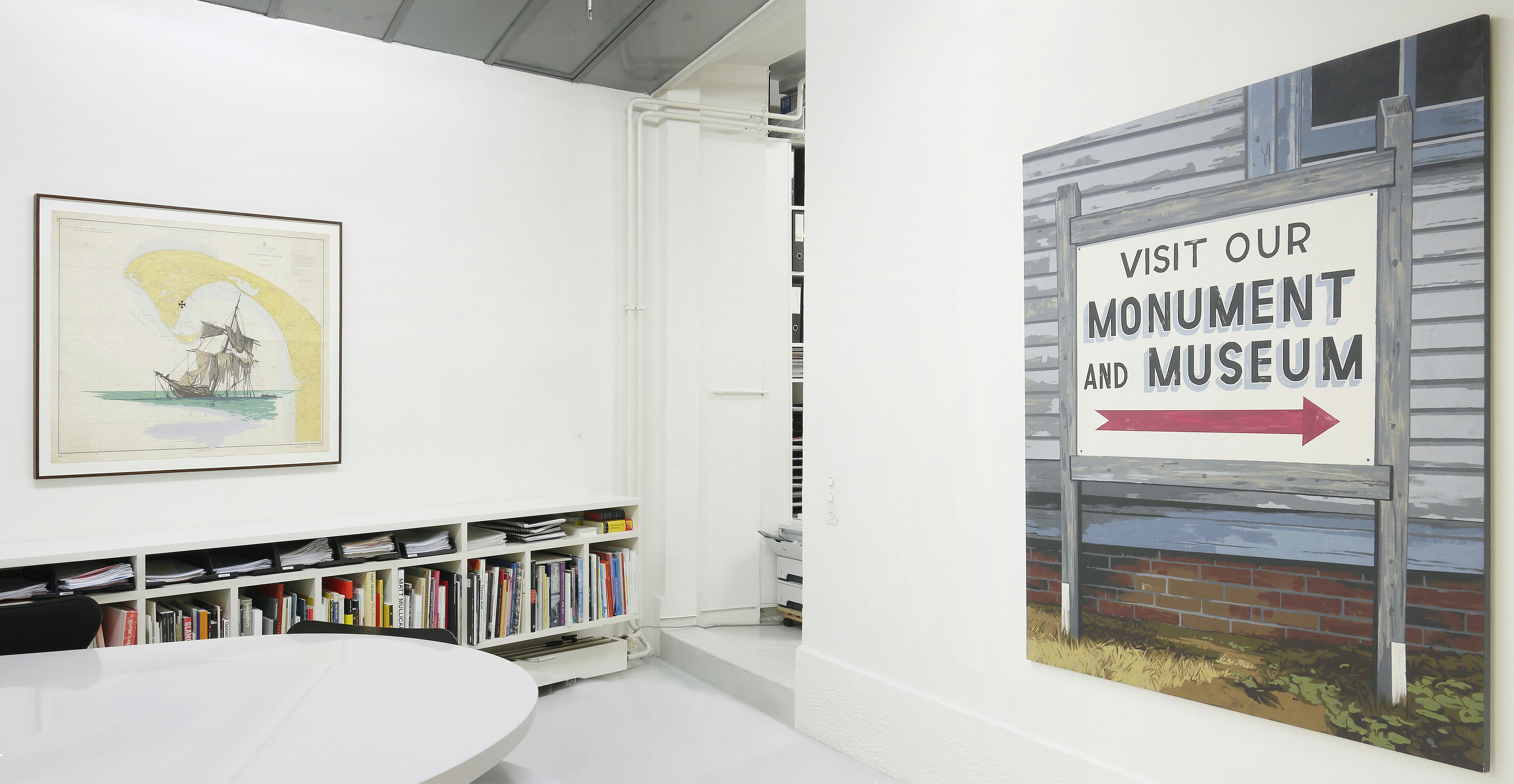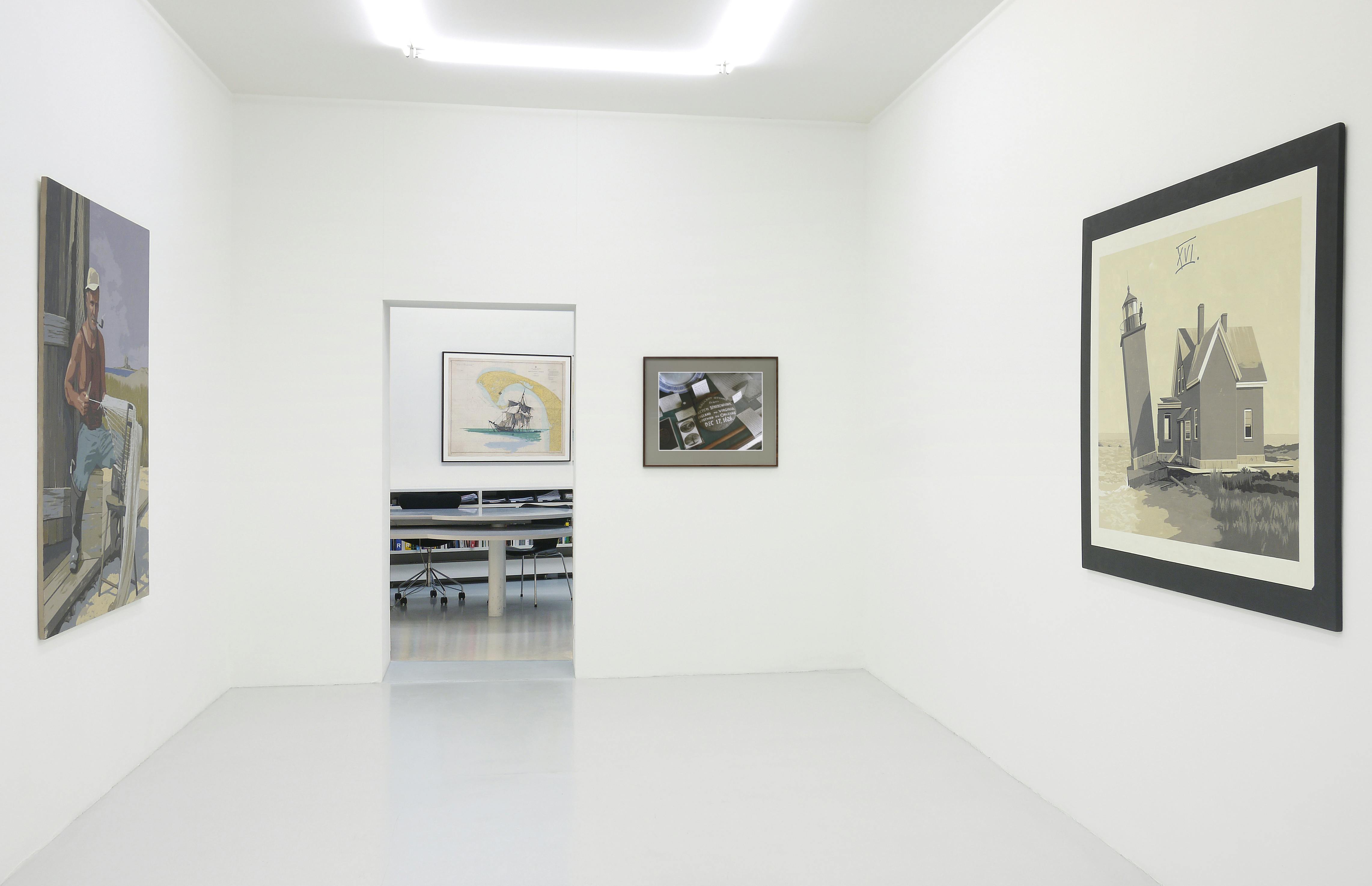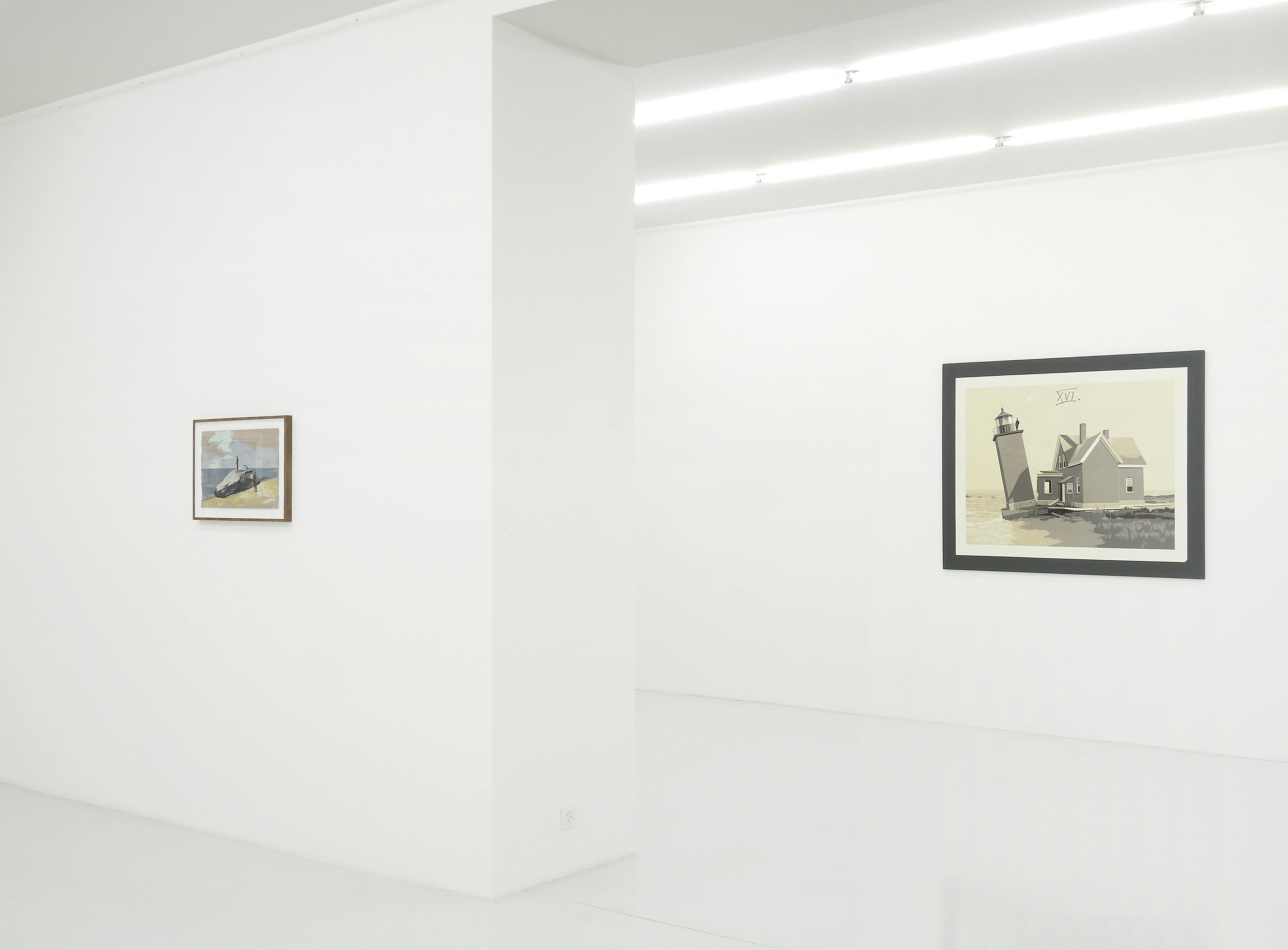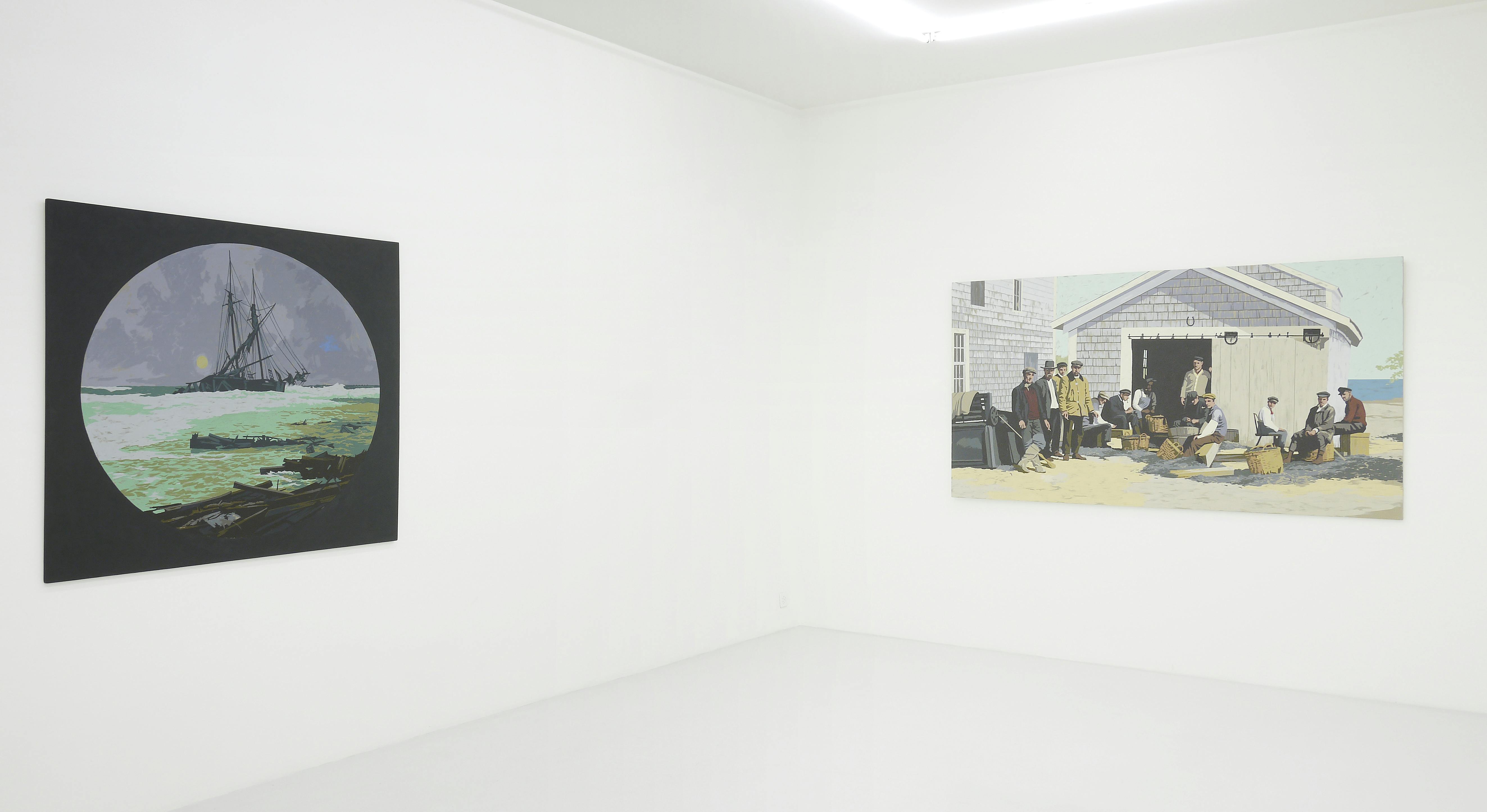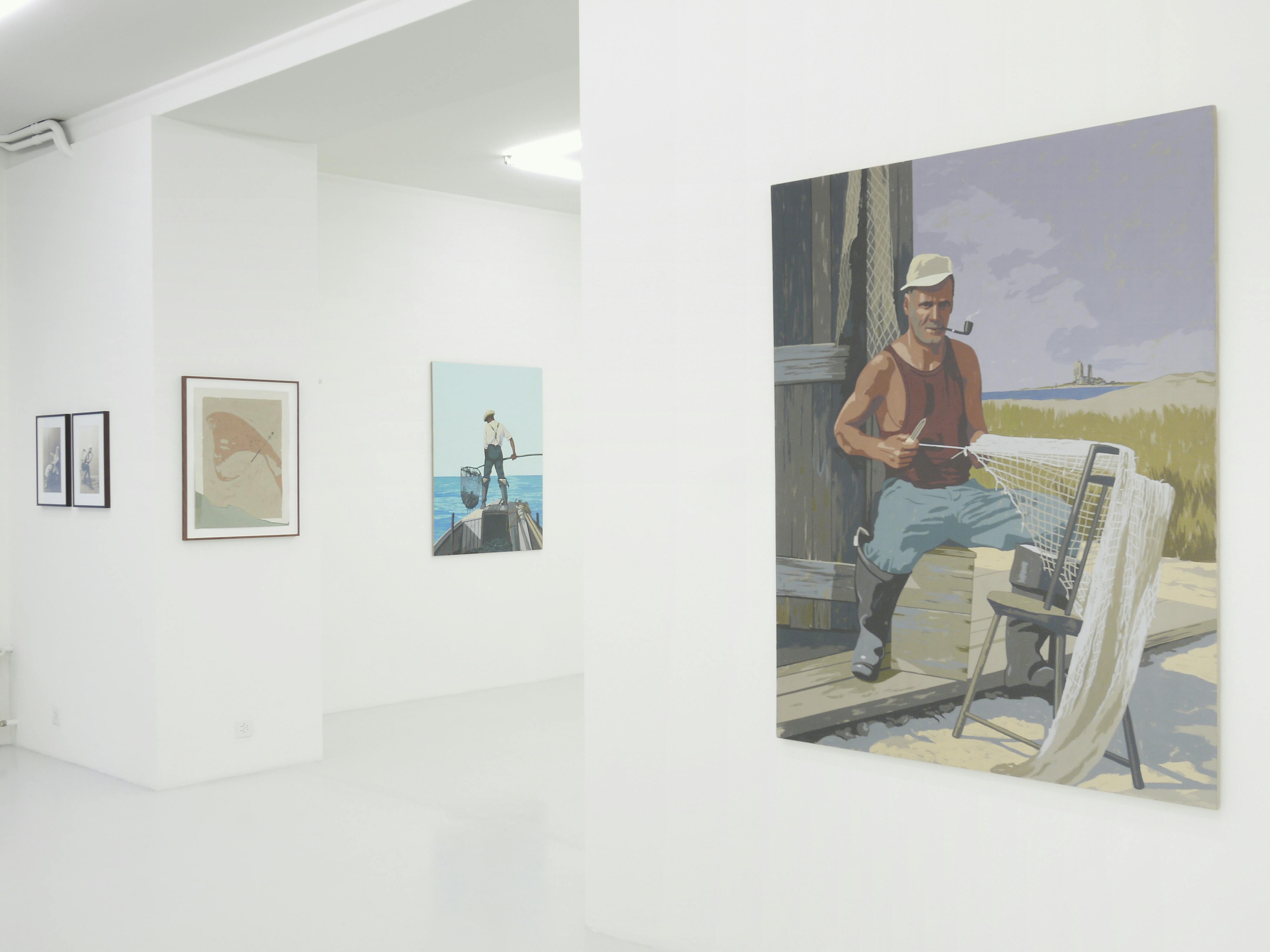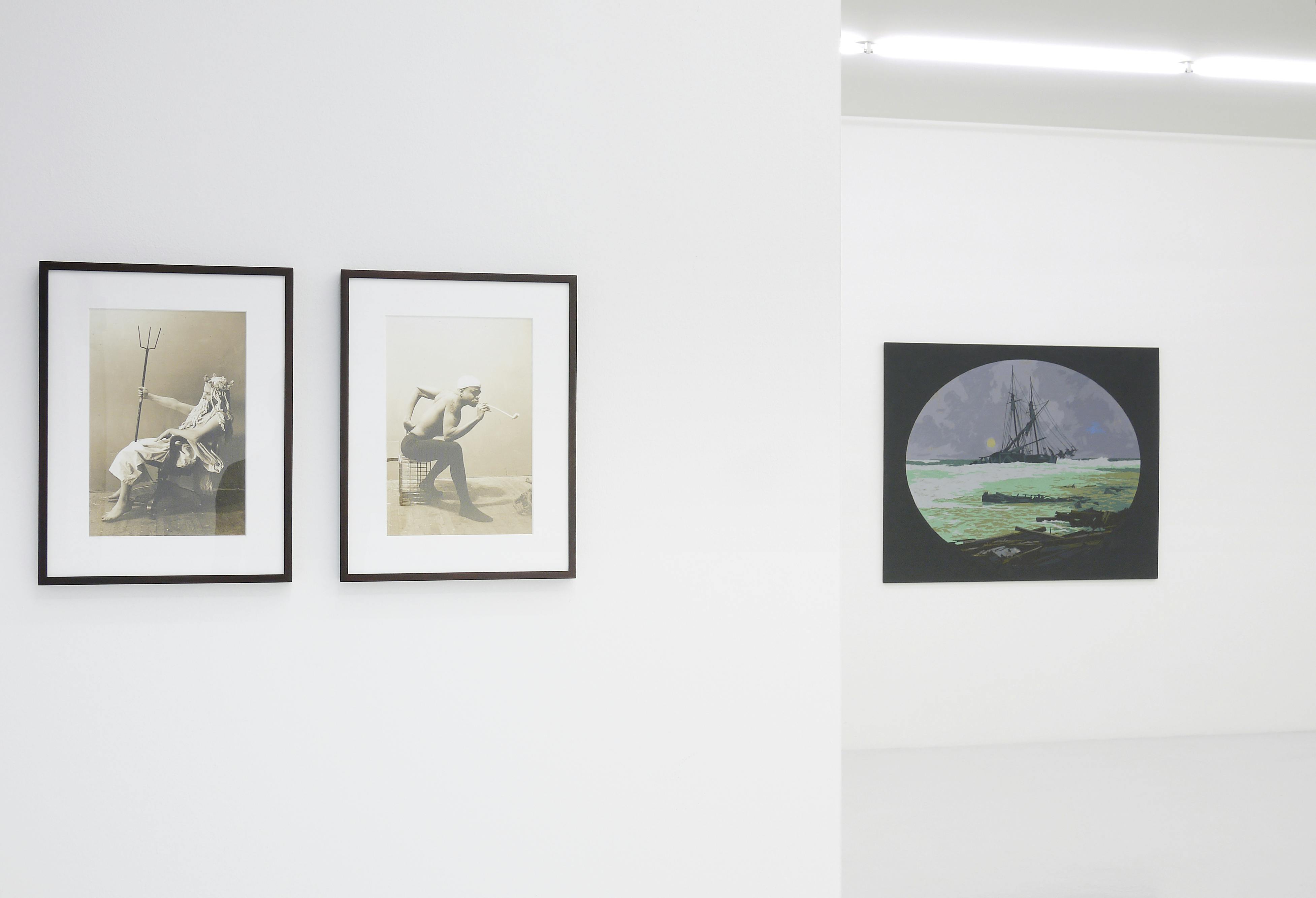For the fourth time the Mai 36 Galerie is presenting the artist Matthew Benedict (born 1968 in Connecticut and currently resident in New York) in a solo exhibition. His highly original work investigates the historical myth-making of the United States: the lasting significance – in addition to the well-known myth – of the founding fathers of the American East Coast, especially the history of their sea-faring descendants and of Cape Cod, a peninsula off the coast of Massachusetts. This ranges from the first landing in the “new world” of the immigrants’ ship, the Mayflower, in 1620, whale-hunting and Melville’s Moby Dick, to the more recent Kennedys and the large houses of the 19th century. The demise of an off-shore lighthouse island is the source of the exhibition’s title.
Matthew Benedict’s exhibitions are always graced with a title that points to their theme. In 2008 at the Von der Heydt Museum in Barmen-Wuppertal it was the netherworlds of magic, tarot and the fantastic literature of Melville, Hawthorne and Stevenson. Another show in Zurich in 2010 was entitled The Canterville Ghost, or then just simply Mystery Stories in New York in 2009. In his exhibition Land’s End in Stockholm in 2013 and now The Lost Island in the Mai 36 Galerie, he sets off to the Cape Cod peninsula and creates a painterly heightened and indeed allegorical social picture of the times and their historical roots.
His paintings, mostly gouaches on wood or paper of medium size, are not only pictures, they present pictures – sometimes even the frame of the source image is painted too. With their reduced, bold and simple colour schemes, they are reminiscent of illustrations in popular history or adventure books. What is special about these depictions is that contemporary views and images based on historical sources are treated in the same way, collapsing a very wide time-span into a visual whole.
Cape Cod and its neighbouring ports were the home of the largest whaling fleet of the 19th century, bigger than the English and Norwegian fleets put together. The crews were recruited – like the USA itself – from all over the world, at a time when it was difficult in Europe to find crews at all. Whaling was dangerous and ships often spent many years at sea before returning home. And often their sad fate was to then founder in the rough seas around Cape Cod. About 200 shipwrecks are located on a sea map of this area. And even the lighthouse island Billingsgate off the end of the point disappeared, a further point of orientation thus being lost. The “new world” offered a new home to the persecuted and the fortune-seekers of the “old world”, and sent these very fortune-seekers back out into the world to make it their own, leaving behind those who were waiting for them on shore.
Quasi-biblical scenes emerge when looking at Matthew Benedict’s visual world. Courage, pretension and sinfulness, adventure, deprivation and good luck, are all brought together and become a parable- like panorama of American history. Today the ebb and flow of the tides wash over the remains of Billingsgate Island, The Lost Island. With his highly individual visual interpretation of pictorial and historical space, Matthew Benedict turns a landscape spectacle into an aesthetic experience, epitomizing a whole society, including our own. (Text: Axel Jablonski)






